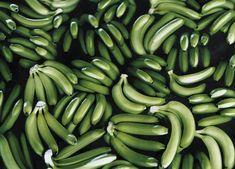
Ecuador’s banana sector appears to be looking favourably on the proposal from the EU to gradually reduce its entry tariff for the tropical fruit from €176 (£156) a tonne to €114.
Representatives from the sector met this week in Quito with Ecuadorean foreign office official Méntor Villagómez to analyse the proposal from the EU.
Leaders of the national association of banana exporters (AEBE), the national federation of banana producers (FNPBE), two regional banana business chambers and exporter Reybanpac gave their acceptance to the proposal, in principle. A meeting was scheduled on Wednesday in the Ecuadorean chancellery to make the national position official. The different elements of the supply chain were also in agreement that their country’s president, Rafael Correa, should continue bilateral trade negotiations with the EU.
Armando Serrano of FNPBE told the Ecuadorean press: “The proposals were accepted but on the understanding that the possibility exists to continue bilateral negotiations with the EU to reach a trade agreement. That way we could achieve a reduction in tariffs in a shorter timescale.”
The EU proposal involves reducing the entry tariff in two stages. Initially, to drop it from €176 to €148 and then continue over the next 10 years to drop it until it reaches €114. Discussion has also centred on including a three-year grace period from 2011 to 2013, during which time there would be no reduction.
Other Latin American countries do not appear as ready to accept the proposal as Ecuador. This could be because they are more advanced in the bilateral trade treaty negations with the EU than Ecuador.
The Andean country’s principal export destination is Russia, accounting for almost 29 per cent of its banana exports. Italy is the second most important destination, with 18.85 per cent, closely followed by the US, with 17.69 per cent.
Ecuador’s dominance as a global banana exporter is eclipsed in the US by Costa Rica and Honduras, where US multinationals have important sources of production.



